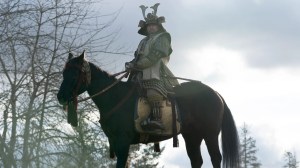Cable gets another fresh start with a new creative team in Cable #155. Writer Lonnie Nader and Zac Thompson and artist German Peralta make up the third creative team to work on the ongoing series since Marvel relaunched it as part of Resurrxion in 2017, and their willingness to buck traditional wisdom about what makes Cable work may prove to be the charm this series needs.
Videos by ComicBook.com
The previous two creative teams have taken a “back to basics” approach to Cable, where “basics” equates to big guns, action movie attitude, and a complete lack of emotional depth. Nader, Thompson, and Peralta go hard in the other direction, opting for a much more emotional approach, and they achieve this partly by reintroducing the most interesting thing about Cable, his daughter Hope Summers, back into his life.
Reestablishing the father and daughter bond between between Cable and Hope immediately sheds the skin of the “badass” 1990s Cable that Marvel seemed suddenly nostalgic for last year and reintroduces the personification of Cable as an old soldier trying to figure out what it means to be a parent when he spent most his childhood without his own.
There is an entire page dedicated to Cable reconnecting with Hope after not speaking to each other for months in which Cable himself finally comes to realize that he’s been putting Hope through the same lonely childhood without guidance that he himself had to live through. The entire issue hinges on this scene, and Peralta lets readers know that by slowing down the pace of the narrative, dedicating several page-length panels to the physical and emotional distance between father and daughter and adding smaller panels of Hope and Cable’s feet in motion to show how they bridge that gap inch-by-inch with each admission.

Cable #155 also brings an unusual tone to the series, one based in horror rather than over-the-top action and rooted in fear. All of Cable’s fears about his daughter are made manifest by the mark left on her by the story’s villain, a mark that is intentionally supposed to remind him of himself. This emotional horror is punctuated by scenes of body horror brought about by the villain’s connection to Cable’s techno-organic virus. This part of Cable’s character is often simplified to “cool metal arm,” but Thompson and Nader choose to emphasize the fact that it is the visible symptom of a hostile virus doing its best at all times to ravage Nathan Summers’ body, which is something that Peralta is particularly adept at depicting. More generally, Peralta’s realistic figures and intimate framings, along with Jesus Aburtov’s dark colors, do everything to indicate that this is a departure from typical, high-octane Cable stories.
The issue isn’t without some flaws. Some of the pages can be a bit confusing, particularly ones heavy on the techno-organic virus effects, and the subplot about Cable saving a mutant girl in the future at best seems out of place and at worst brings up some ethical questions about Nathan playing fast and loose with people’s timelines, but the flaws don’t outweigh to merits, especially since the awkward introductions fade away almost completely as soon as Hope and Cable are back on the same page.
Cable #155 is an about-face for a series struggling to define itself. Simply put, this is Cable’s best self, brought out by creators who are interested in diving below the surface and creating a textured narrative about personal connections and the specters we create as we move forward in our lives. Cable being Cable, those specters are especially literal and deadly, but its good to see “the man called Cable” fulfilling his potential again.
Published by Marvel Comics
On March 21, 2018
Written by Zac Thompson, Loddie Nadler
Art by German Peralta
Colors by Jesus Aburtov
Lettering by VC’s Travis Lanham








